Canon interview: ‘Development of compact devices supporting 8K is a very high priority’
 |
| Go Tokura, Chief Executive, Image Communication Business Operations at Canon. Pictured here at the CP+ show in Yokohama, Japan, in 2016. |
As part of our ongoing series of executive interviews at major camera and lens companies, we talked recently with several Go Tokura, Chief Executive of the Image Communication Business Operations at Canon. In this interview we discussed new developments in optics, how new concepts of ‘reality’ will inform the evolution of computational photography technologies, and what to expect from the forthcoming EOS R3.
This interview was conducted over email, and has been lightly edited for clarity and flow.
What benefits should we expect Canon’s Stacked CMOS sensors to be able to offer, compared with previous generation sensors?
Compared to CMOS sensors of previous generations, stacked CMOS sensors feature separate layers on the substrate: a pixel layer that enables higher image quality and a circuitry layer that provides increased performance. This construction makes possible higher-quality video capture, high-sensitivity still image and video capture and enables faster readout for higher-speed continuous shooting that will give very low rolling shutter distortion.
Will the EOS R3 be capable of high resolution video as well as stills?
We cannot provide detailed information at this point, but we can confirm that oversampled 4K video capture will be possible.
Now that the R3 sits at the top of the RF mount line, do you still consider the EOS-1D X Mark III to be your ‘flagship’ professional camera?
We still consider the EOS-1D X Mark III to be our flagship professional camera due to its extreme reliability and confidence it delivers in the hands of professionals. However, it is true that the EOS R3 exceeds the EOS-1D X Mark III in some specifications, to the extent which, by the conventional definition, you could consider it a flagship camera.
While the RF system is a major evolution of the EF system, we believe that in order to bestow an RF camera with the “1” model designation, we must achieve an even greater level of performance, and we continue to work towards reaching those high standards.
Were the EF 400mm F2.8L IS III and 600mm F4L IS III developed from the outset with the intention of being ‘dual mount’ designs, for both EF and RF?
The EF 400mm F2.8L IS III USM and EF 600mm F4L IS III USM, which we released in 2018, were manufactured to an extremely high level of perfection in order to realize high image quality, light weight and high-performance IS. However, we did not develop these lenses with the intention of making them ‘dual-mount.’
After we introduced the EOS R system in 2018, we received a lot of feedback from photographers who wanted to use super-telephoto lenses native to the RF mount
After we introduced the EOS R system in 2018, we received a lot of feedback – far more than we had anticipated – from photographers who wanted to use super-telephoto lenses native to the RF mount (that is, without an EF-RF mount adapter). These photographers told us they wanted something even more reliable, and that they didn’t want to have to attach a cumbersome mount adapter. So based on this feedback, we began work on developing super-telephoto single-focal-length RF lenses based on their EF counterparts.
Why do the new RF 400mm F2.8L IS and 600mm F4L IS lack control dials?
We considered including a separate control ring, but since we decided to base the RF versions of the these lenses on the EF 400mm F2.8L IS III USM and EF 600mm F4L IS III USM, including the control ring would have made them larger and heavier. For that reason, we ultimately decided not to do so.
Will all RF and (adapted) EF lenses be compatible with the 30 fps shooting mode on the EOS R3, or only select lenses?
Please wait until the official EOS R3 announcement for details.
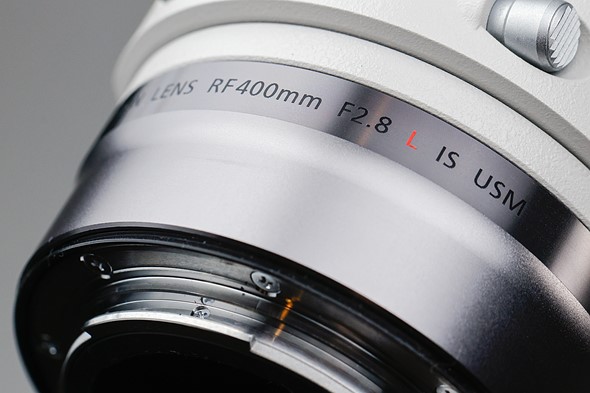 |
| We were surprised to learn that the EF 400mm F2.8 and 600mm F4 released in late 2018 were not originally developed with future RF mount versions in mind. |
Can you give examples of some of the technologies used in your RF lenses which are only possible because they’ve been designed for mirrorless?
The optical designs of the RF 70-200mm F2.8 L IS USM and RF 70-200mm F4 L IS USM fully leverage the advantages of the RF mount’s large diameter and short flange-back distance to achieve a significant reduction in length compare with their EF mount counterparts (EF 70-200mm F2.8L IS III USM and EF 70-200mm F4L IS II USM, respectively).
Additionally, the RF 600mm F11 IS STM and RF 800mm F11 IS STM lenses would only have been possible with mirrorless cameras. Thanks to Dual Pixel CMOS AF, which performs well in low-light environments, AF is still usable even at slower apertures (higher F-numbers). Capitalizing on this, we were able to create fixed F11 aperture super-telephoto lenses with size and weight reductions that would otherwise have been unimaginable.
What has the professional / market response been to your new ‘blue refractive optics’ technology? Will it be included in more lens designs in future?
The EF 35mm F1.4L II USM was the first lens to include a BR lens element, and one is also used by the RF 85mm F1.2 L USM and RF 85mm F1.2 L USM DS. The image quality, which heavily reduces axial chromatic aberration and completely eliminates color fringing, has received high praise from users in the professional market.
We have a strong record of developing optical technologies designed to correct chromatic aberration
Beginning with artificially grown fluorite crystals and including UD lenses, DO lenses, and BR lenses, we have a strong record of developing optical technologies designed to correct chromatic aberration. In order to meet the needs of our customers, we plan to use such technology wherever we believe it is most suitable, so please look forward to further developments.
Are your RF 600mm and 800mm F11 the first of a new series of affordable tele lenses?
Absolutely. Please look forward to similar products in the future.
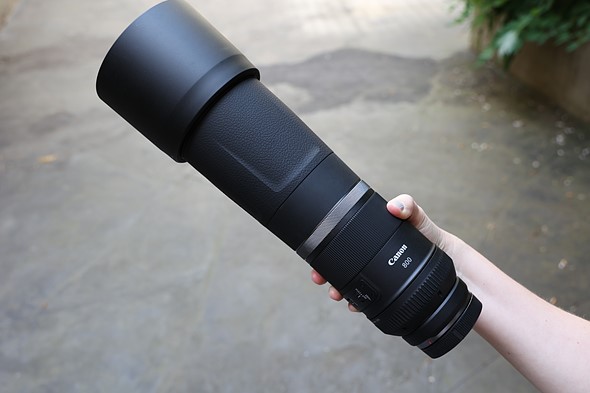 |
| The RF 600mm F11 and 800mm F11 STM (the 800mm pictured here) use diffractive optics and an extending design to keep size and weight to a minimum. The main tradeoff is a fixed aperture of F11. |
Will dual-pixel CMOS AF evolve to include ‘quad-pixel AF’ with cross-type AF points?
We are certainly considering the idea of cross-type AF and quad-pixel AF. Autofocus is a relatively broad term, technologically speaking, so we are looking at its potential evolution in three ways: (Evolution in) AF sensitivity, ultra-high speed and AI-powered tracking. Cross-type AF and quad-pixel AF are possible themes we will consider.
Dual-pixel AF enables interesting computational imaging capabilities, like bokeh and focus shift. Can we expect to see Canon further explore computational approaches that utilize the dual-pixel sensor design?
In 2016, DP RAW image processing, which utilizing dual pixel data to enable additional adjustment possibilities, was incorporated in EOS 5D Mk IV. With the introduction of the new DIGIC X image processor in 2020, we were able to advance the processing capacity to the next generation, realizing such improvements as high-speed/high-precision AF and subject recognition with deep learning.
Using these foundational advancements, we are now exploring the ways in which computational imaging can lead to further evolution.
Does Canon regard computational imaging as the future of photography, or will there always be a place for traditional cameras?
We are already using computational imaging to improve the quality of photographs through such functions as various aberration corrections, filter effects and refocusing. Looking ahead, we are still exploring potential uses of computational imaging, but we are always working to identify and serve customers’ needs, and are therefore proactively searching for and aiming to implement new uses for this technology.
People are moved when they see beautiful images, and they have an instinct for seeking beautiful imagery that is ‘closer to reality.’ We believe that ‘reality’ will become more important, even in the virtual image world, and we see potential to apply our technologies to it.
On the other hand, however much computational imaging may advance, capturing light in a single instant using an optical lens remains the foundation of the physical phenomenon of photography. Therefore, the importance of optical lenses, one of Canon’s strengths, will never decline. So we will also continue our pursuit of greater optical designs.
What will the next 10 years look like in terms of optical developments?
Over the next ten years, we expect to see the continued spread of 4K/8K and HDR displays, as well as next-generation technologies beyond those. Accordingly, we anticipate the ongoing need for sophisticated optical technologies that will serve as input devices for such displays. In addition, there will likely be much greater use of optical technology in input devices for the ‘Internet of Things’ age.
We will continue to develop and implement state-of-the-art optical elements, new optical design technologies and other advancements
Canon has always possessed leading optical technology. Going forward, we will continue to develop and implement state-of-the-art optical elements, new optical design technologies and other advancements, as well as reinforce the manufacturing technology that support the production of these devices.
We also believe that ‘reality’ will become a more central theme as xR (the collective term for augmented reality (AR), mixed/hybrid reality (MR) and virtual reality (VR) displays become more widespread worldwide. We see potential to apply our optical technology here as well.
What aspects of stills and video image quality can we expect Canon to make significant strides upon over the next 5 years?
We understand there is demand for Canon to continue improving such aspects as resolution, high sensitivity and dynamic range, and we are making steady progress towards those improvements. Beginning with the EOS-1D X Mark III released in 2020, we have supported HDR image capture in the HEIF format based on the PQ standards defined by the ITU-R BT.2100 recommendations.
For video, starting with the EOS R5 and EOS R6, there is also support for HDR recording using the HDR-PQ transfer function. Going forward, we will continue to increase such support.
Why does Canon feel the need to use noise reduction in Raw files, and may we request that it be a feature that can be toggled on or off?
We can’t provide specific details regarding image processing, but the newly developed CMOS sensor used by the EOS-1D X Mark III, EOS R5 and EOS R6 achieves greater performance, resulting in significant improvements such as better low-light performance and higher dynamic range.
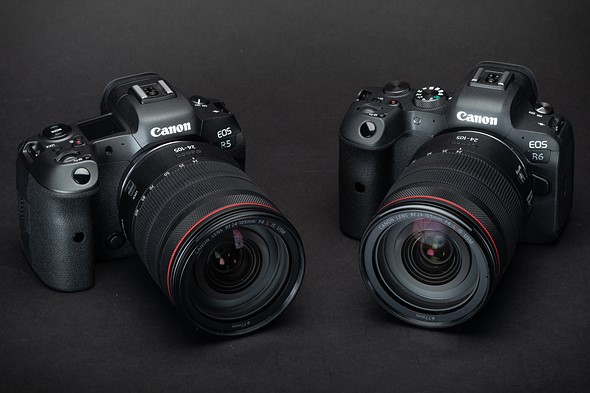 |
| The Canon EOS R5 (left) and R6 (right) are very similar ergonomically, but aimed at different users – and at different price points. |
Is the balance of R5 versus R6 sales what you expected?
The ratio of sales between the EOS R5 and EOS R6 is roughly what we had anticipated, but both models were received much more enthusiastically than we expected. It’s unfortunate that we did not manufacture enough units to satisfy all of our customers, however.
We position the EOS R5 and EOS R6 as next-generation mirrorless cameras, and as such, we crammed as many cutting-edge technologies as possible into both models. They were definitely designed to anticipate future use and performance needs.
The cameras were released when demand began to recover after the COVID-19 impact, which helped gave sales a boost.
For lenses, we want to gradually provide models at more affordable price points
The EOS R system debuted with the launch of the EOS R in October 2018 – just over two years ago. For the time being, we want to concentrate on expanding the system’s product lineup. Especially for lenses, in which we’ve assembled a lineup of high-end models, we want to gradually provide models at more affordable price points. We’re also working to design completely new and exciting models like the RF 600mm F11 IS STM and RF 800mm F11 IS STM. Please look forward to future announcements!
Do you have a sense of the popularity of the R5 and R6’s video features? Have that had any impact on your development plans?
We believe that a variety of features led to the positive response, including world’s first 8K video, high-resolution 4K oversampling video, AF that responds to subjects and users’ creative intentions and IS that enables smooth handheld video recording, as well as high image quality that meets the needs of professional users.
Going forward, we will strive to further advance our sensors, as well as AF and IS technology, usability and expandability.
Which types of lenses are you hearing most demand for?
Thanks to our customers, sales of EOS R system cameras are growing, and as a result, RF lens sales are all performing well overall. Like with their EF series counterparts, the F2.8 RF ‘trinity’ lenses for professional and enthusiast users are also achieving strong sales.
We have fully leveraged the advantages of the RF mount’s large diameter and short flange-back distance to create models like the RF 15-35mm F2.8 L IS USM wide-angle lens. Despite being nearly the same size as its EF series counterpart, the RF lens provides a 1mm wider focal length and features IS. The RF 24-70mm F2.8 L IS USM standard zoom lens similarly features IS while remaining the same size as its EF counterpart, and the RF 70-200mm F2.8 L IS USM telephoto lens realizes a much shorter body length than its EF counterpart.
Sales of EOS R system cameras are growing, and as a result, RF lens sales are all performing well overall
All three of these lenses not only feature IS, but are also equipped with Nano USM that enables smoother and more pleasant still and video image capture. We strongly believe that customers have been very pleased with the significant advancements over the previous EF lenses. We are also aware of the high demand for the affordable RF 50mm F1.8 STM released near the end of 2020. We intend to concentrate on further expanding this lineup.
There’s been a slowdown in releases of enthusiast compact cameras, such as the PowerShot G7 X series. Do you believe that smartphones have overtaken this category?
Some of our product categories have been affected by smartphones, but due to the COVID-19 pandemic, there has been urgent demand for home-use online communication tools, and these cameras have also seen demand from YouTubers and vloggers.
We are closely monitoring the changing needs of consumers and are discussing changes to product lineups as needed.
How important is the development of 8K video for your future strategy?
In terms of 8K video, resolution is roughly the same quality as a still image. For this reason, it’s believed that the line between still and video image capture styles is becoming increasingly blurred.
We anticipate the spread of 5G, along with the use of 8K video among hobbyists, artists, the media and even business
Looking ahead, we anticipate the spread of 5G and its capability for transmitting large amounts of data at high speeds, along with the use of 8K video among hobbyists, artists, the media and even business fields including healthcare and security. For these reasons, we believe that development of compact devices supporting 8K is a very high priority for us.
How long will entry-level DSLRs like the Rebel series have an audience?
While there may not be a return to the high levels of demand we saw in the past, we believe that there will continue to be a consistent number of users demanding entry-level DSLR models like the EOS Rebel series.
Many users who purchase EOS Rebel series DSLR consider themselves professional or enthusiast photographers, or use them as part of their business. In the B2B sector for example EOS Rebel series cameras are used in such cases as ID photo booths (for passports, licenses, etc.)
We will continue to provide a wide range of products to meet the diverse needs of markets in different countries and regions.
Will the RF mount grow to incorporate APS-C format cameras? Or are you committed to the separate EF-M mount for APS-C?
We can’t comment on specific plans, but APS-C size cameras are popular due to their size, weight and telephoto range advantages compared to full-frame cameras. We will listen to customers’ opinion and consider possible options.
What market are you hoping to attract in the long-term with your EOS M range of cameras?
EOS M series cameras are popular with users who prefer compact and lightweight models. Many professional and enthusiast photographers use them as sub cameras. We will continue to promote the EOS M-series cameras as a means of meeting diverse needs.
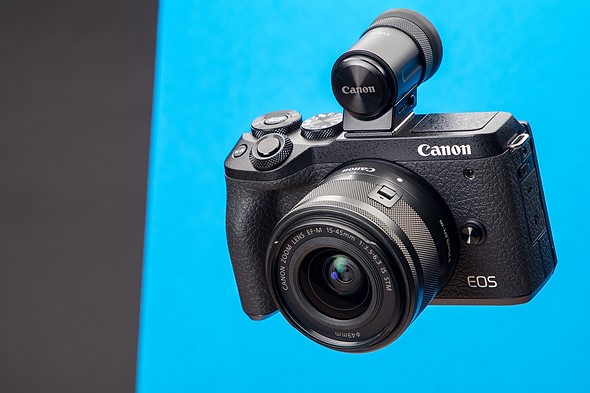 |
What have you learned from the introduction of the new concept cameras to the global market? (i.e., PowerShot Zoom)
We found that consumer demand for new concept cameras with specialized usage styles and functions was higher than expected. We address diverse needs by providing features specific to target users and their use cases. Canon’s development concept is based on ‘speed, comfort and high image quality.’ However, in the sense that users can enjoy shooting easily and comfortably according to their intended use, we may pursue ‘pleasant image quality’ over ‘high image quality’ for these new concept cameras.
What can dedicated camera manufacturers to do to compete with the convenience of the smartphone camera, both hardware and software?
As a camera manufacturer, we believe there is still a lot that we can do to distinguish ourselves. First is to further distinguish cameras from smartphones. We’re aiming for the ultimate in high image quality that is only possible through the combination of the large sensor and large-diameter lenses, primarily used in ILCs, that cannot be used by smartphones.
Second, we will propose new ways to enjoy imaging and shooting. We plan to introduce more concept cameras and ways to enjoy photography that differ from conventional smartphone shooting, such as the IVY REC, which can withstand getting wet or being dropped, and the PowerShot PICK, which enables automatic image capture. Through this, we plan to create and expand a new market.
We want to utilize a smartphones as a compact and high-performance display, high-speed image transmission device and a tool for communication
Third is connectivity. We want to utilize a smartphones as a compact and high-performance display, high-speed image transmission device and a tool for communication. We want to utilize them as a tool of the ‘post-capture’ process for our apps and services. While we have already introduced services like the image.canon cloud platform that connects to users’ cameras and the Camera Connect app for smartphones, we are continuing to design new ways to provide even greater integration and ease of use.
Is there a barrier to working directly with smartphone manufacturers on creative solutions?
If it leads to greater value for customers, we see no obstacles to working with other companies.
After full-frame, and mirrorless, what is the ‘next big thing’ for consumer digital imaging technology?
We expect that in the near future, technologies like 5G, VR / AR and AI will continue to evolve and become more widespread, and that their use in image capture, editing, transmission and viewing will greatly increase. More than ever before, people will be able to enjoy digital imaging conveniently and seamlessly. Envisioning this future of society and imaging, we will strive to deliver even higher value products and services.
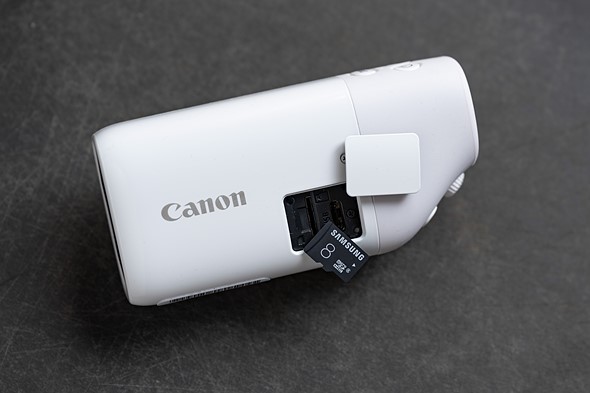 |
| The unconventional Canon PowerShot Zoom is aimed at casual photographers that want lots of telephoto reach in a highly compact form factor, as a companion device to a smartphone. |
Following the official release of some of what had been concept cameras, what is your strategy for attracting the ‘smartphone generation’ to Canon?
We will continue to advertise the unique advantages of interchangeable lens cameras to the pool of potential enthusiast and professional users who have strong preferences for imaging expression. For users who prioritize video shooting such as YouTubers and vloggers, we plan to provide products that facilitate comfortable shooting and streaming workflows.
Meanwhile, for users who want to enjoy casual stills and video shooting, we will propose new ways to enjoy imaging by providing products like the PowerShot Zoom that augment smartphone functionality.
In addition to users enjoying shooting , we will also provide solutions that help them enjoy the entire shooting workflow, including editing and other post-capture processes.
What would you say is the biggest challenge that Canon faces in 2021 and how do you plan on addressing it?
We expect the effects of COVID-19 to gradually fade with the development and rollout of the vaccine, but in terms of demand for travel and events, which indicate a true recovery, the future is extremely difficult to predict. We will strive to revitalize the market as a leading company because maintaining and expanding the size of the market is one of the most important issues to us.
We expect the effects of COVID-19 to gradually fade, but in terms of demand for travel and events, the future is extremely difficult to predict.
In order to establish a more solid position in the mirrorless market, we will continue to enhance the line-up of EOS R camera bodies and RF lenses.
In preparation for the upcoming Tokyo Olympics, we will also concentrate on preparing a top-notch support system for professional photographers. We aim to achieve zero downtime for them so that they are unencumbered by equipment malfunctions or damage.
What do you see as the biggest unaddressed or insufficiently addressed consumer need in the consumer DI space?
Despite the explosive increase in the number of people enjoying digital imaging thanks to the spread of smartphones and social media, the camera market continues to decline. Many vloggers and YouTubers use EOS or PowerShot G series cameras, and more than 1.5 million people worldwide have downloaded the EOS Webcam Utility software for PCs, which Canon released last year, that enables them to use their cameras as webcams. This indicates a trend towards customers using their EOS and PowerShot cameras as webcams.
Our opportunity lies in satisfying user needs and ensuring ease-of-use, so going forward, we will strive to identify the needs of the market and propose solutions that address them.
We think conventional cameras are still in the ‘Standalone’ range. We recognize the importance of post-shooting solutions, and have already addressed this to some extent by providing solutions including the image.canon cloud platform that links PCs and smartphones with an external web service. However, we recognize there is room for improvement in regards to ease of use, so please look forward to future developments.
Editor’s note: Barnaby Britton
Canon shooters should find much to be happy about in this interview – and not just as regards the forthcoming EOS R3, which, the more we learn, increasingly looks like a ‘flagship’ camera, despite its name. We’re told to look forward to the introduction of lenses at ‘more affordable price points’ like the RF 50mm f1.8, and further development of enthusiast-friendly lenses ‘similar’ to the unique RF 600mm and 800mm F11 long teles, which were released last year. It was surprising to learn from Mr Tokura that the EF 400 F2.8 and 600mm F4 professional telephoto lenses were not developed with future native RF support in mind originally, although it does at least explain the absence of a control ring from the new RF-mount versions.
Considering Canon’s (slightly unfair) reputation for conservatism, it was encouraging to hear Mr Tokura stress the importance of future developments in 5G connectivity and AR / AI in the future evolution of both Canon’s cameras and the wider photo business. While it’s easy to dismiss products like the IVY Rec and the PowerShot Zoom alongside their interchangeable lens peers, both products represent a serious attempt to break out of Canon’s traditional customer base and learn from the needs of a new or previously unaddressed audience.
Canon expects continued adoption of 4K and 8K video to be a major theme in the future, as the line between stills and video gets more and more blurry
Photographers of the (near) future will be more connected than any previous generation, and ‘mobile first’ photographers and videographers alike will benefit from the massive increase in wireless bandwidth promised by 5G. How Canon exploits this technology is of course an open question.
Interestingly, Canon expects continued adoption of 4K and 8K video to be a major theme in the future, and as the line between stills and video gets more and more blurry, we’re told that this will make the development of ‘compact’ 8K platforms important. In the nearer term, Canon clearly sees the connection between the continued development of high-quality video and the need for increased optical requirements for ‘input devices’ (i.e., lenses).
Speaking of video – and looping back to the EOS R3 – although Mr Tokura was understandably reticent to say too much about the upcoming camera ‘on record’, it seems increasingly unlikely at this stage that the sensor will have sufficient pixels for 8K capture, and our bet would be on a 30MP chip – with the triple-3 confluence of nomenclature, resolution, maximum frame-rate probably no coincidence.
Click to read more in-depth interviews




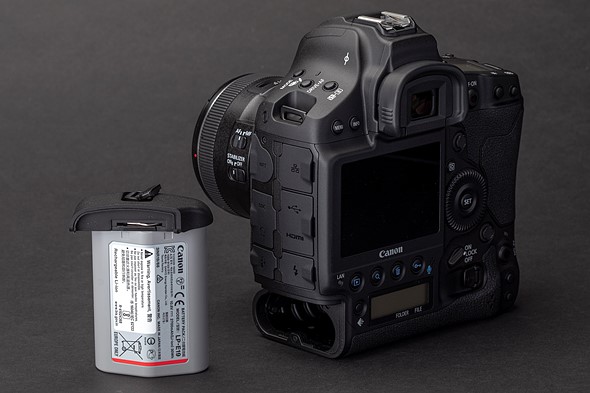

 Started out doing photography at the age of 6 using an uncle's old 1940 kodak brownie box camera. At 15 years of age, I decided to buy my very own 1975 Praktica SLR camera. I now shoot with a Nikon D850. I do unpaid TFP and commercial paid work.
Started out doing photography at the age of 6 using an uncle's old 1940 kodak brownie box camera. At 15 years of age, I decided to buy my very own 1975 Praktica SLR camera. I now shoot with a Nikon D850. I do unpaid TFP and commercial paid work.